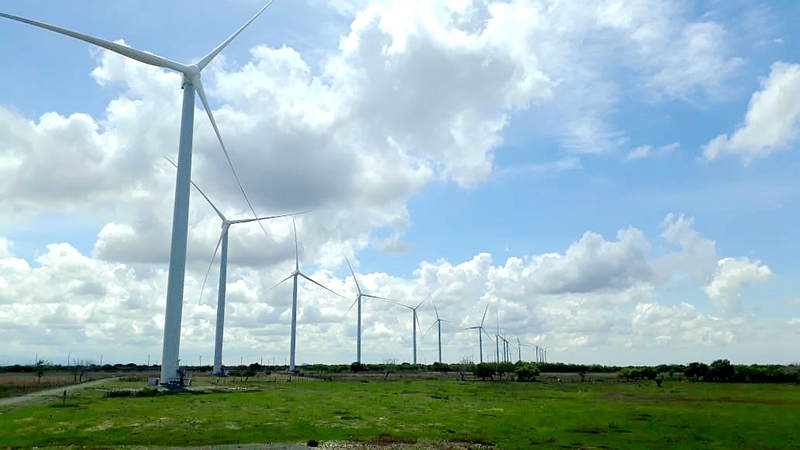
Goldwind wind farm (Photos: People's Daily)
Panama is a small country with a population of just over four million. However, excellent location and convenient transportation make it the "crossroads of the world".
The Isthmus of Panama connects North America and South America. The Panama Canal connects the Pacific Ocean and the Atlantic Ocean, carrying about six percent of the world's shipping trade.
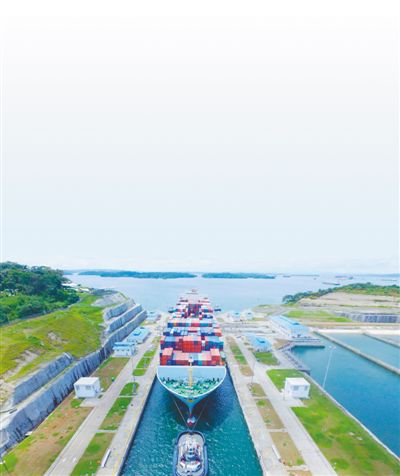
A COSCO container ship passes through the Panama Canal.
Even before the establishment of diplomatic relations between China and Panama on June 13, 2017, many Chinese enterprises had entered the country to explore the market.
Since the establishment of ties, exchange and cooperation have reached a new level. Chinese enterprises have earned trust and respect of the Panamanian people through their efforts to accelerate development and improve the quality of local people’s life.
Improve people’s livelihood: no more electricity limitations
160 kilometers west of Panama City is a wind farm, delivering clean energy to local residents. Covering an area of 300 square kilometers, it is the largest overseas wind farm constructed by China’s Goldwind company.
Panama is a tropical country where 60 percent of the electricity is consumed by air-conditioning. In 2013, it suffered its worst power crisis since 1998 when hydropower stations ran dry. Most government institutions, shops and homes across the country had undergone forced power rationing. “Since the first phase of the wind farm was started four years ago, [we] no longer need to limit electricity,” said Antonio, a restaurant manager.
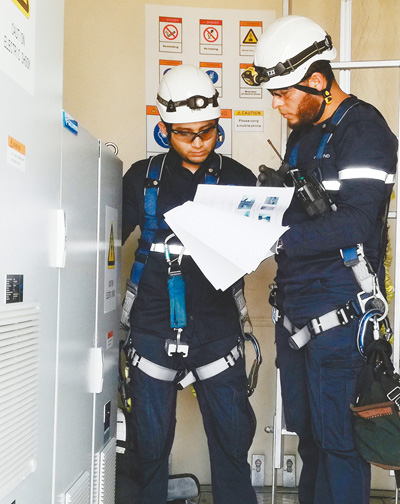
Local staff examine the wind power equipment.
Yang Xiaoping, a technician at Goldwind Service Panama told People’s Daily that wind farms generate 90 percent of the total electricity during the dry season, complementing hydropower and ensuring a balance in power generation through the year.
The wind farm can meet the demand of 100,000 households. Panama's two presidents attended the completion ceremonies of the project’s two phases in 2014 and 2016.
According to Su Ning, a project manager at Goldwind Service Panama, the company has direct-driven permanent magnet technology with independent intellectual property rights. It has high power generation efficiency and low operation and maintenance cost.
Project manager assistant Ana Adams said that all 14 foreign employees have private cars. Good career prospects make local people yearn for jobs in Chinese enterprises.
Create jobs: unprecedented development opportunities
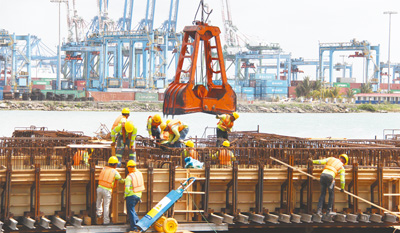
Local employees work at the container port terminal in Colon, Panama.
A container port is under construction on Margarita Island, the fourth one in Colon — a big seaport near the Atlantic entry to the Panama Canal.
Since the Panama Canal expansion project wrapped up in June, 2016, "superpanamax" ships are able to shuttle freely between the Pacific and the Atlantic. The cargo ships’ carrying capacity has risen from 5,000 teus (standard container) to 14,000 teus. As a result, the expansion and development of ports on both sides of the two oceans has begun.
Wang Xiangfeng, chief engineer of the Colon Port Terminal project undertaken by China’s Landbridge Group, said that the China-invested project, which started construction in 2017, will have three berths for superpanamax container ships. It is expected to handle 2 million teus of cargo annually in the early stage and that will rise to 2.5 million.
Last year, Panamanian President Juan Carlos Varela praised Chinese enterprises’ involvement in constructing the port at the ground-breaking ceremony, stressing that “the construction of the project marks a new stage in bilateral economic and trade relations.”
The advanced equipment and technology introduced by China make the upgradation project of Colon Port progress smoothly, said Jose, a project engineer. He told People’s Daily that Chinese equipment dominates the market in Panama and the Argentinian region.
It is reported that the port is expected to generate at least 2,000 jobs for locals, including 800 during the construction phase and 1,200 during the final operation of the terminal.
Panama national convention and exhibition center a new landmark
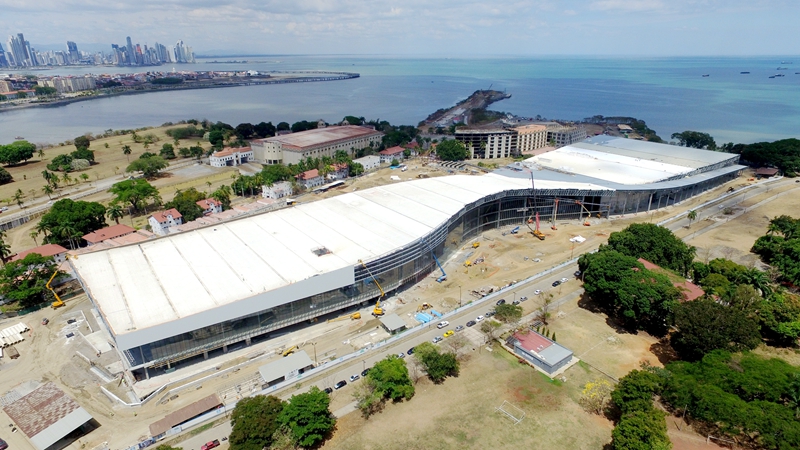
An aerial view of the Panama international convention and exhibition center.
Panama’s new landmark — the national convention and exhibition center— is under construction on the Amador Causeway in southwest Panama City.
The project, undertaken by CCA South America (CCA: China Construction America), a subsidiary of CSCEC (China State Construction Engineering Corporation), is spread over 70,000 square meters and will be completed in the second half of this year. After completion, the annual EXPOCOMER will be relocated from the old convention and exhibition center to the new one.
The international exhibition and tourism industry brings a large income to Panama every year. The construction of the region’s largest international convention and exhibition center is of great significance for the country, said Li Jun, vice president of CCA South America, adding that “the center, which can accommodate 30,000 people, plans to hold 100 exhibitions next year, with an average of two to three days per event. Thousands of jobs will be created and it will bring in more than $700 million in revenue. Panamanian President Varela visited the construction site twice.”

Local employees work at the construction site of the Panama international convention and exhibition center.
Luis Marquez, executive project manager, said that “new technology is introduced into construction and over 700 workers are locals”.
In addition, CCA South America has a residential project named “City of Hope” in Panama. One of the low income housing projects promoted by the Panamanian government, it is aimed at improving the living conditions of 13,000 residents.
Blend in with locals: combination of localization and internationalization
Localized management has always been an important strategy for CSCEC to go global. Some staff have been working overseas for decades and are well-acquainted with the local society and culture. The company offers weekly Chinese, English and Spanish courses for local employees, topping them up with classes in Chinese culture.
“Chinese companies perform very well in local environmental protection, and all my Panamanian counterparts agree”, said Roberts, an engineer responsible for environment safety at Goldwind. The economy mainly relies on the service sector and the country attaches great importance to the environment.
For ecological reasons, Panama focuses on developing clean energy such as wind power and solar power. “Wind power is a new type of clean energy that has little impact on the environment”, said Yang, adding that Goldwind has environmental safety engineers for all projects.
Panama faces the sea and the coast is full of mangroves, which can prevent the coastal regions against wind-waves, protect banks, and purify air and sea water. To protect the mangroves, Landbridge Group took four million cubic meters of sand from the depths of the Atlantic to 20 nautical miles offshore.
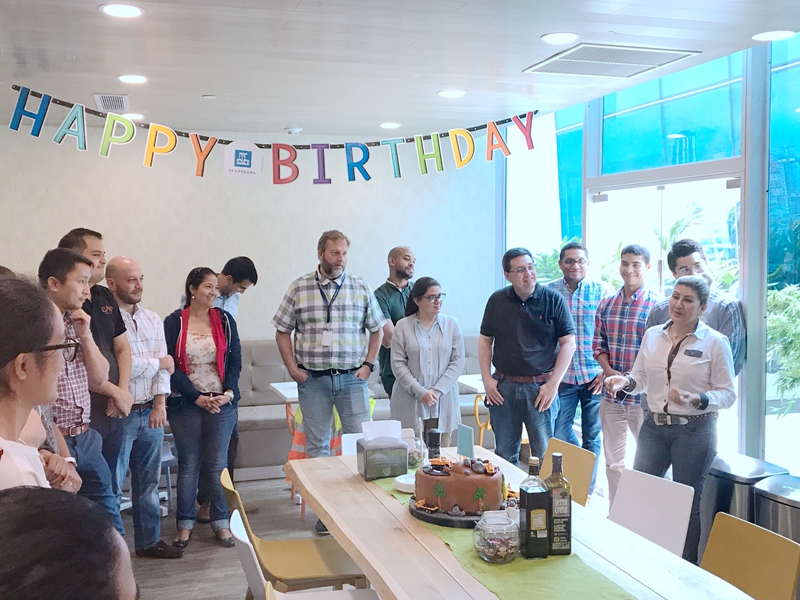
CCA South America holds birthday celebrations for local employees every month.
The internationalization of Chinese enterprises is equally impressive. “We have ten employees from different countries here,” said Linda Torralba, head of human resources at CCA South America, “I am proud to say that we have many employees who can speak three or four languages, having greatly facilitated mutual communication and understanding."
Andres comes from Colombia and speaks fluent Chinese. He has WeChat workgroups in several languages to communicate with departments and counterparts. “Open and inclusive culture is beneficial to the development of multinational companies. It is also easier for multinationals to accept us when we cooperate," he said.
Andres’ wife is Chinese and he takes his family back to China once every year. "I hope the cooperation between CSCEC, other Chinese companies and Panama and even Latin America in the future will further develop. China needs Latin America, and Latin America needs China!"
(Reported by Chen Xiaowei and Wang Xiaobo in Panama City, Compiled by Du Mingming)


